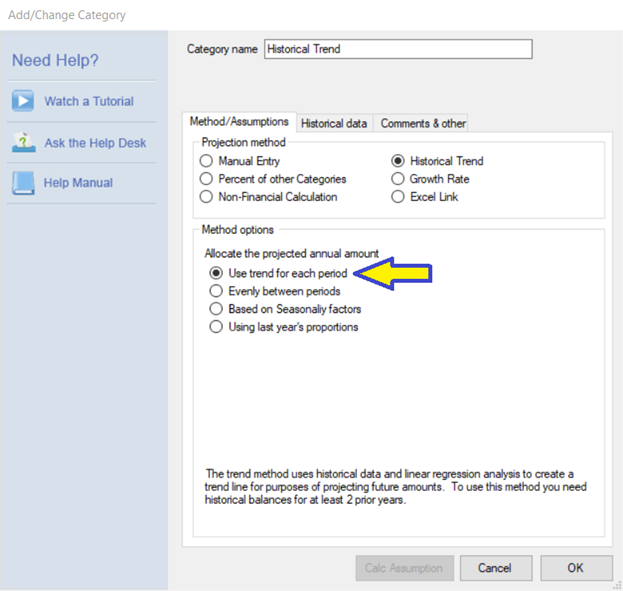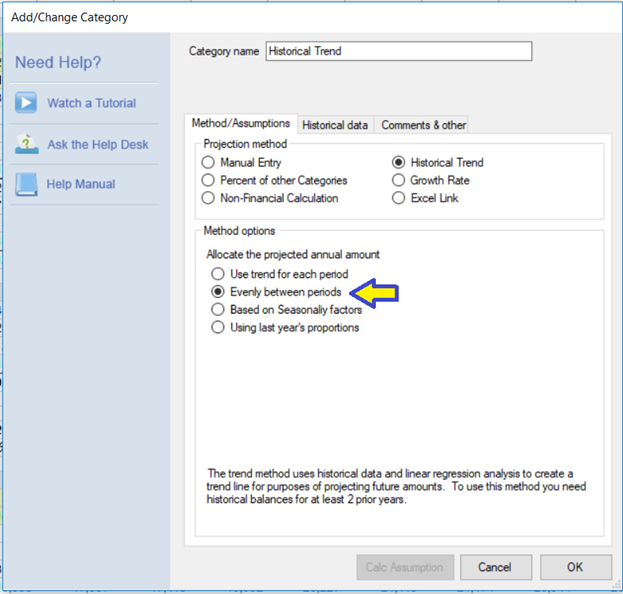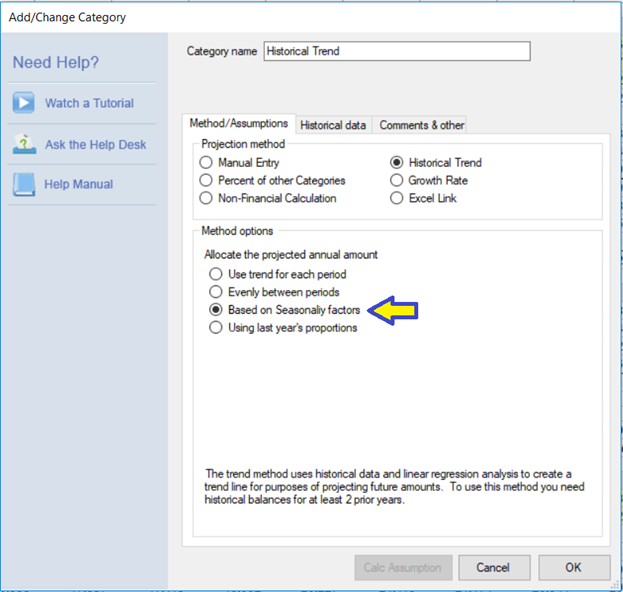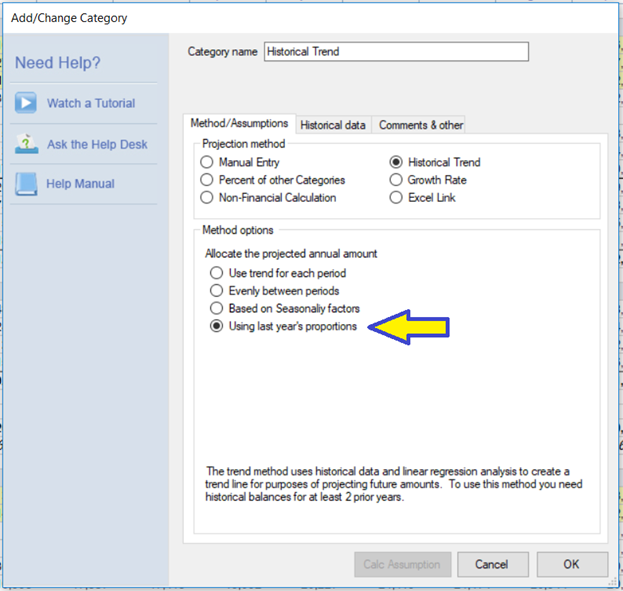Trend based on historical data
PlanGuru's Historical Trend projection method is great for situations where you want to forecast objectively based the trend of your historical data. When using this forecast method, PlanGuru takes your historical data and finds a trend line by running a linear regression, and forecasts future amounts based on the trend.

There are four sub options under this method.
Use Trend for each Period
This method forecasts each monthly amount based on the trend line constructed.

Evenly Between Periods
This method forecasts full year projected amounts based on the trend line and allocates the trended full year amount evenly among each interim period.

Based on Seasonality Factors
This sub-method forecasts full year projected amounts based on the trend line and allocates the trended full year amount to each interim period based on their seasonality percentages.

Using Last Year’s Proportions
This sub-method forecasts full year projected amounts based on the trend line and allocates the trended full year amount based on the first historical year’s proportions.

Requirements for using Trend Based on historical data method.
IF you're trying to use the Historical Trend projection method, but don't have more than one year of historical data you will receive the following error message. In order for this Method to be accurate, PlanGuru needs a minimum number of data points. As a result, you can only use this method of you have more than one year of historical data.

When using the Trend based on historicals method all of your historical periods should be filled in. When PlanGuru runs a linear regression, it weights all periods equally, thus not filling in historical periods will distort your forecasted results. In the sample below, I've left most of my historical periods open.

As a result, my forecast is way out of line with my historical amounts. This is because all of the periods with zeros are factoring into the trend line calculation.

